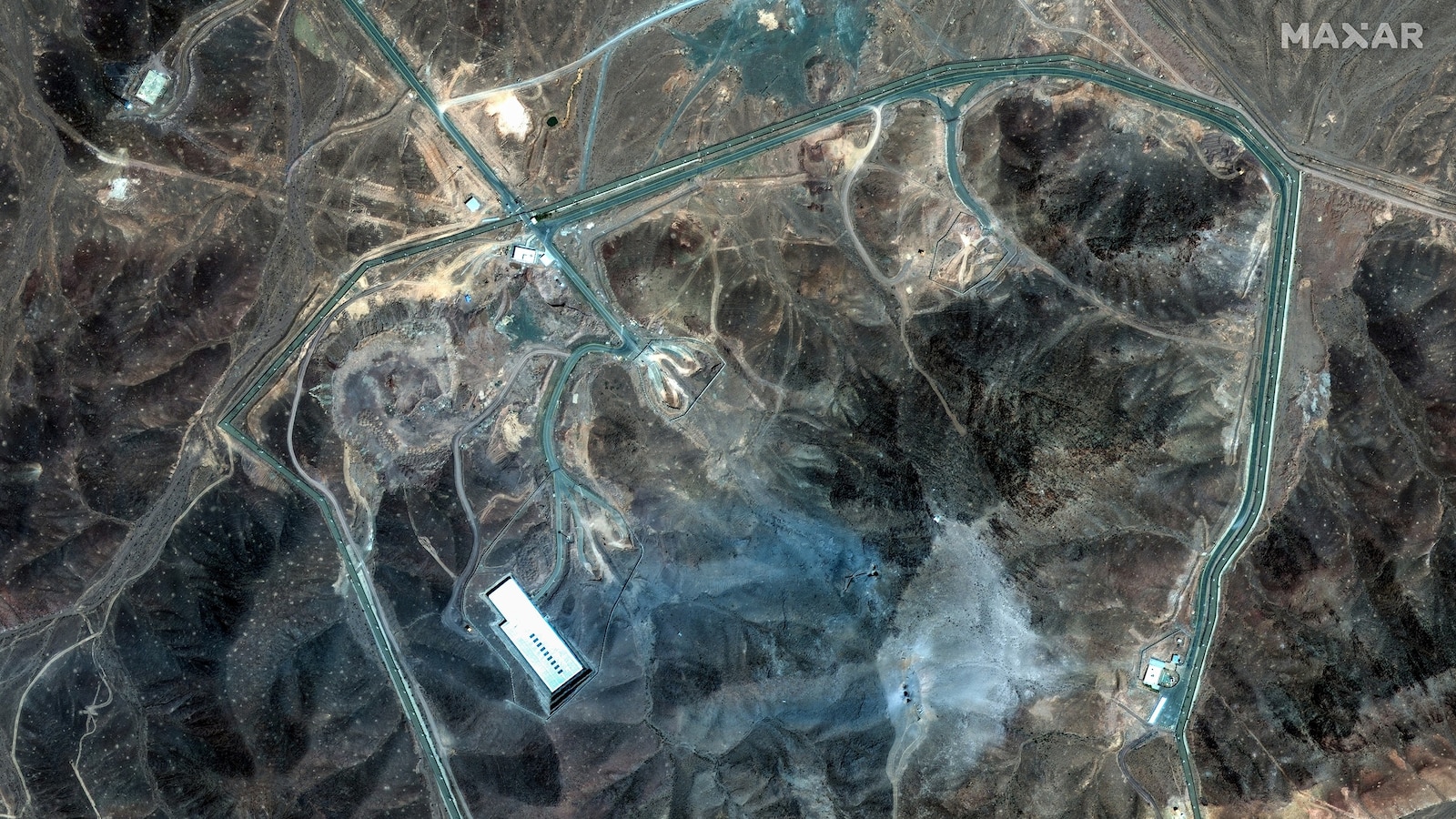In a dramatic escalation of tensions, satellite images have unveiled the extensive damage inflicted on Iran’s key nuclear facilities following a series of U.S. airstrikes. The operation, dubbed “Midnight Hammer,” targeted the Fordo, Isfahan, and Natanz sites on June 22, 2025, marking a significant moment in the ongoing geopolitical conflict.
President Donald Trump declared the sites “completely and totally obliterated,” yet officials have urged caution, noting that a comprehensive battlefield damage assessment is still underway. “Initial battle damage assessments indicate that all three sites sustained extremely severe damage and destruction,” stated Joint Chiefs Chairman Gen. Dan Caine.
Fordo Nuclear Site: A Closer Look
The Fordo nuclear site, located approximately 60 miles south of Tehran, is renowned for its uranium enrichment capabilities. Satellite images from Maxar Technologies reveal significant damage, including large craters and a layer of blue ash, indicative of the impact from the strikes. Several tunnel entrances appear obstructed, raising questions about the extent of the internal damage.
International Atomic Energy Agency Director General Rafael Grossi commented on the uncertainty surrounding the internal state of the facility, “It is clear that Fordow was also directly impacted, but the degree of damage inside the uranium enrichment halls can’t be determined with certainty.”
Experts, such as Sam Lair from the Middlebury Institute, suggest that the craters may have targeted ventilation shafts, potentially crippling the facility’s operations. The presence of blue/gray ash, identified as ejecta from the Massive Ordinance Penetrators (MOPs), further complicates assessments of radioactive contamination.
“Certainly it is not a direct sign of radioactivity,”
noted Professor Jacopo Buongiorno of MIT, emphasizing the challenges in evaluating the full impact of the strikes.
Isfahan Nuclear Technology Center: Widespread Destruction
The Isfahan facility, central to Iran’s nuclear technology efforts, has suffered extensive new damage. Satellite images depict over a dozen buildings destroyed, adding to the destruction from prior Israeli attacks. The U.S. strikes appear to have targeted the uranium conversion section, significantly impacting the site’s operational capacity.
Grossi confirmed the damage, stating, “The latest attacks early this morning damaged other buildings in Esfahan. In addition, we have established that entrances to underground tunnels at the site were impacted.”
This development highlights the strategic importance of Isfahan in Iran’s nuclear ambitions and raises concerns over the potential for further military escalation in the region.
Natanz Nuclear Facility: A Strategic Target
Natanz, Iran’s largest nuclear enrichment center, has also been heavily targeted. Satellite images reveal an 18-foot diameter crater over the underground military complex, alongside significant destruction of surface buildings. The attack appears to have focused on the underground facilities, utilizing multiple MOPs to maximize penetration.
Previously, Israeli strikes had already compromised Natanz’s above-ground infrastructure, including electrical systems and backup generators. The latest U.S. operation underscores the strategic importance of Natanz and the ongoing efforts to disrupt Iran’s nuclear capabilities.
Implications and Global Reactions
The U.S. strikes on Iran’s nuclear sites have intensified international tensions, drawing varied responses from global powers. The operation has raised questions about the future of nuclear diplomacy and the potential for further military confrontations in the region.
Experts warn that the destruction of these facilities could provoke retaliatory actions from Iran, potentially destabilizing the already volatile Middle East. The international community continues to monitor the situation closely, with diplomatic efforts underway to prevent further escalation.
As the world waits for a comprehensive damage assessment, the implications of the U.S. strikes on Iran’s nuclear infrastructure remain a focal point of global geopolitical discourse. The coming weeks will likely reveal more about the extent of the damage and the potential paths forward for both nations.
